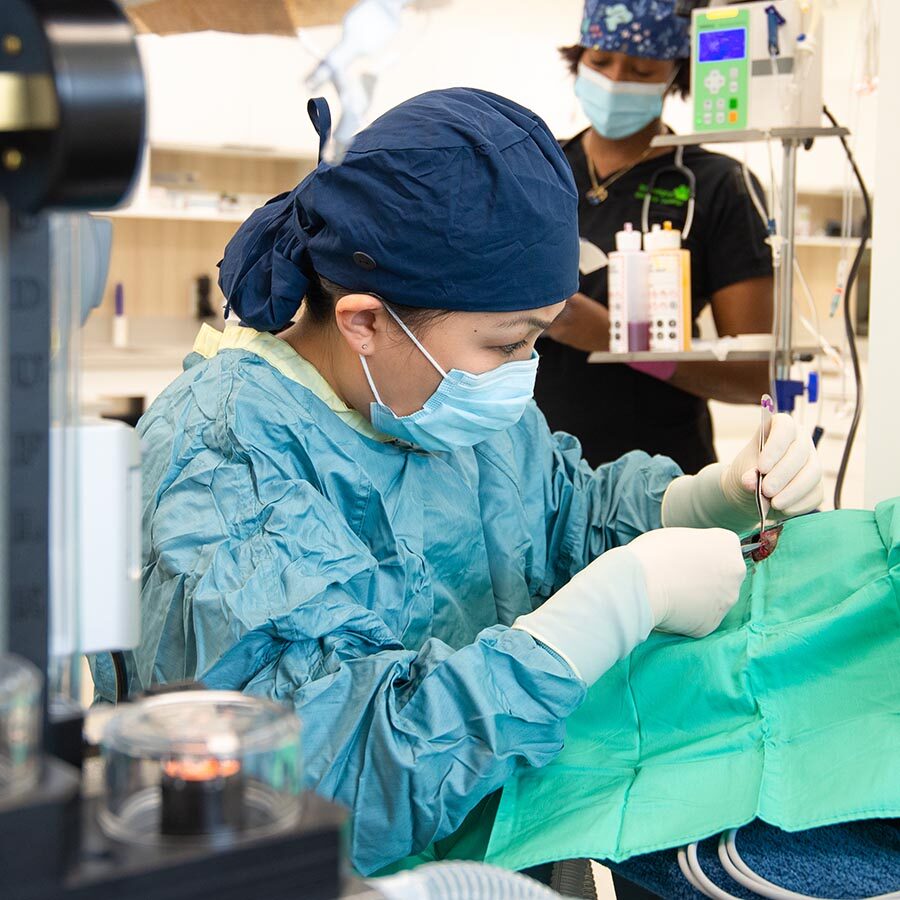When Is the Right Time to Spay or Neuter?
That depends on several factors, including the size and lifestyle of your pet. Our veterinarians will discuss those factors with you to help decide on a date based on what’s the best age to neuter a male dog or the best age to spay a female dog.
Other Pet Surgeries We Do
We perform a wide variety of soft tissue surgical procedures at SOVH, including:
- Spays, neuters, and Caesarean sections (C-sections)
- Removal of lumps, urinary bladder stones, and swallowed objects that have become stuck in the stomach or intestines
- Wound repairs
- Skin and liver biopsies
- Splenectomies (removal of the spleen)
- Gastropexies (attaching the stomach to the abdominal wall to prevent life-threatening stomach twisting and bloat in certain breeds prone to it)
- And more…
For surgeries that lend themselves to it, we take a minimally invasive approach using laparoscopy (keyhole surgery). We also perform dental procedures — professional cleanings and extractions of diseased or broken teeth.


What to Expect Prior to Surgery
We’ll need recent bloodwork. We may also need to do additional screening (a pet with a heart murmur will need an evaluation of the heart with ultrasound and X-rays, for example). Pre-operative screening helps us decide whether surgery can go ahead, and which medications and fluid rates are best suited to your pet.
We’ll have you in for a pre-operative consult to go over fasting instructions (no food after midnight; water’s okay until about 2 hours before you arrive), to dispense calming medication given before leaving home on the day of the procedure so your pet arrives relaxed, and to go over what to expect on the day of surgery. The day before surgery, we’ll contact you to review fasting instructions and send you a surgical consent form to sign.

